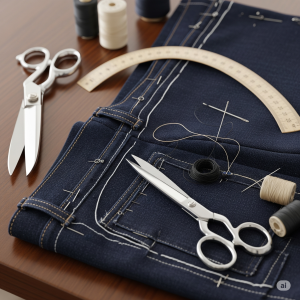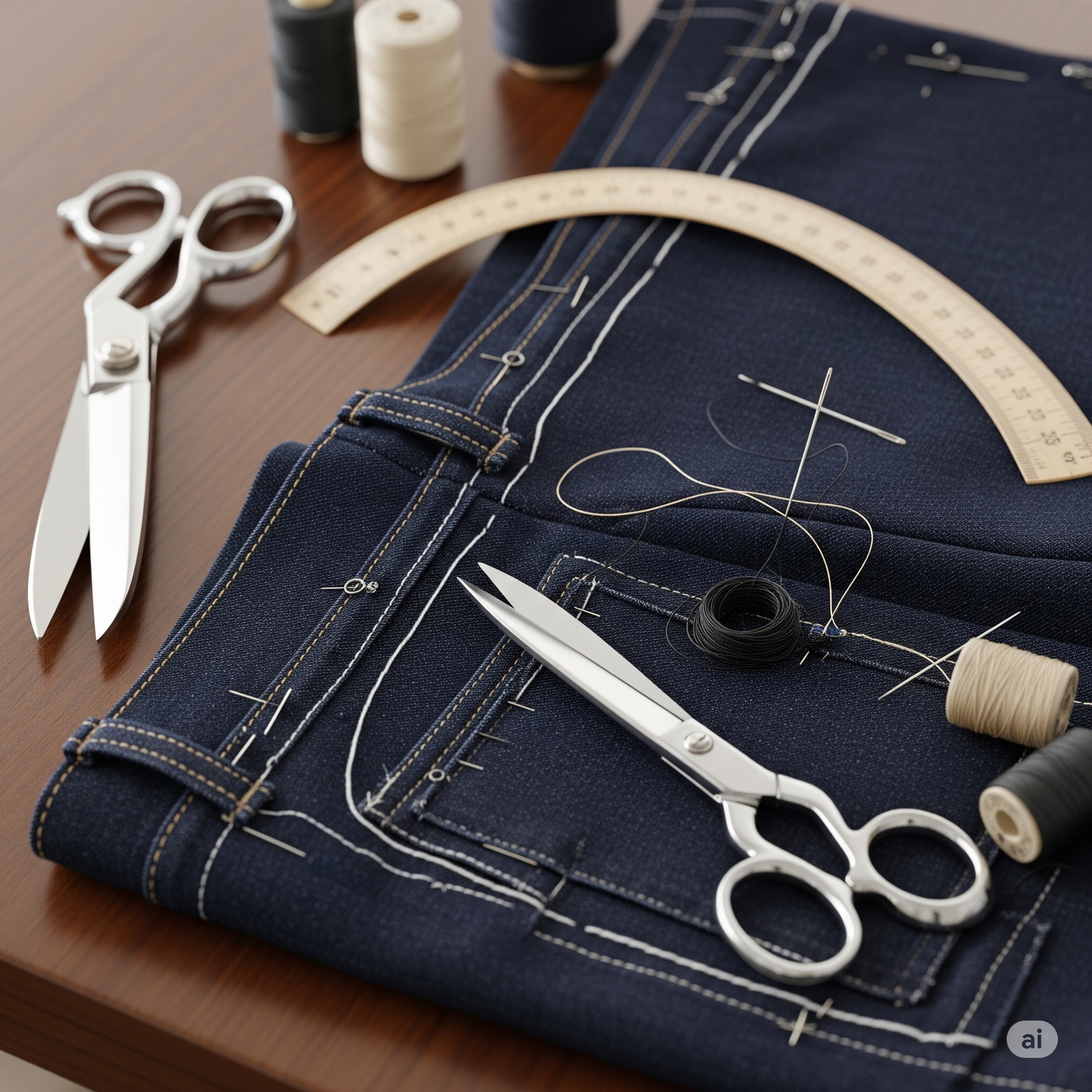Apprentice Clothing Construction: Men’s and Women’s Garments
This apprentice-level course provides a comprehensive introduction to the essential techniques of clothing construction for both men’s and women’s apparel. Students will develop foundational skills in garment assembly, modification, and finishing, focusing on practical application and industry best practices. Through hands-on projects, apprentices will gain proficiency in critical areas such as seam closing, hemming, alteration, precise fabric overlap, and professional iron pressing, ensuring a high-quality finish for a variety of garments.
Key Learning Areas:
Seam Closing:
Objective: To create durable, clean, and aesthetically pleasing seams that are appropriate for the garment type and fabric.
Techniques:
Plain Seams: Mastering straight stitching with consistent seam allowances (e.g., 5/8″ or 1/2″), backstitching for security, and trimming/clipping curved seams for smooth lie.
Seam Finishes: Learning various methods to prevent fraying and add durability, including:
Serged/Overlocked Seams: Utilizing an overlocker for a neat, enclosed finish.
Zigzag Finishes: Applying zigzag stitches to raw edges.
French Seams: Creating a durable, enclosed seam ideal for sheer or delicate fabrics in blouses, shirts, and dresses.
Flat-Felled Seams: Constructing strong, flat seams commonly found in jeans and workwear for both men and women.
Bound Seams: Enclosing raw edges with binding for a clean, decorative finish, often used in unlined jackets or tailored garments.
Pressing Seams: Understanding the importance of pressing seams open or to one side during construction for a professional appearance and flatter lie.
Application: Practicing on various fabric weights and types (e.g., cotton, linen, denim, wool, synthetics) for different garment components (e.g., side seams on trousers/skirts, shoulder seams on shirts/blouses, sleeve seams on jackets).
Hemming:
Objective: To create neat, even, and appropriate hems that provide a polished finish and proper garment length.
Techniques:
Machine Hems: Straight stitch, twin needle, and zigzag hems for durable, visible hems on casual wear (e.g., jeans, T-shirts).
Hand-Stitched Hems: Mastering invisible techniques like the blind hem stitch, slip stitch, and catch stitch for formal wear, tailored garments, and delicate fabrics (e.g., dress trousers, skirts, jacket linings).
Rolled Hems: Creating very narrow, often machine-stitched hems for lightweight or sheer fabrics (e.g., scarves, formal blouses, delicate dresses).
Faced Hems: Constructing faced hems for curved or shaped edges, ensuring a smooth and stable finish.
Trouser Cuffs: Learning to create traditional folded cuffs for men’s trousers.
Application: Hemming various garment types, including skirts, dresses, trousers (men’s and women’s), shirt tails, and jacket sleeves, to specific measurements and desired styles.
Alteration:
Objective: To modify existing garments to achieve a custom, improved fit for individuals.
Techniques:
Basic Fit Adjustments: Taking in or letting out side seams, waistbands (trousers/skirts), and dart adjustments for a contoured fit.
Length Adjustments: Shortening or lengthening hems on pants, skirts, dresses, and sleeves while maintaining original design and finish.
Tapering: Adjusting the width of pant legs or sleeves for a more modern or preferred silhouette.
Button and Replacement: Learning to replace missing buttons, by hand or the button hole machine.
Minor Repairs: Addressing small tears, snags, and reattaching elements like belt loops or pockets.
Application: Working on a range of men’s and women’s ready-to-wear clothing, understanding how to assess fit issues and execute precise modifications while preserving the garment’s integrity.
Overlap:
Objective: To understand and execute proper fabric overlap for closures, facings, and structural elements, ensuring correct garment function and appearance.
Techniques:
Button and Buttonhole Plackets: Creating precise overlaps for shirt fronts and cuffs (men’s and women’s).
Wraps and Closures: Understanding how to manage fabric overlap for wrap skirts, dresses, and other overlapping closures.
Facings: Attaching and understitching facings to necklines, armholes, and hems to create clean, stable edges with no visible raw edges.
Application: Ensuring correct left-over-right (men’s) or right-over-left (women’s) overlaps where applicable, creating functional and visually balanced garment openings.
Iron Pressing:
Objective: To utilize professional pressing techniques throughout the construction process to achieve crisp seams, smooth surfaces, and a well-shaped garment.
Techniques:
Pressing vs. Ironing: Differentiating between “pressing” (lifting and lowering the iron) for shaping and setting, and “ironing” (gliding the iron) for smoothing.
Pressing Tools: Proper use of an iron, ironing board, press cloth, tailor’s ham, sleeve board, and clapper.
Temperature and Steam Control: Understanding fabric-specific heat settings, and the effective use of steam and moisture to manipulate fabric.
Pressing During Construction: Pressing seams open, to one side, and darts before crossing with other seams for a flat, professional finish.
Final Pressing: Applying techniques for the final shaping and smoothing of a completed garment, including setting creases in trousers and finishing collars and cuffs.
Application: Integrating pressing as an integral part of every construction step, ensuring that each component is perfectly shaped and smooth before proceeding, resulting in a superior finished product for both structured menswear and fluid womenswear.
This apprentice description emphasizes practical skills, attention to detail, and the knowledge required to produce high-quality garments that fit well and look professional.
Aaron Linder has been given Journeyman tailor by Tom Nguyen in 2002-2003, who was the California Men’s Wearhouse Regional Tailor Supervisor.


Reviews
There are no reviews yet.